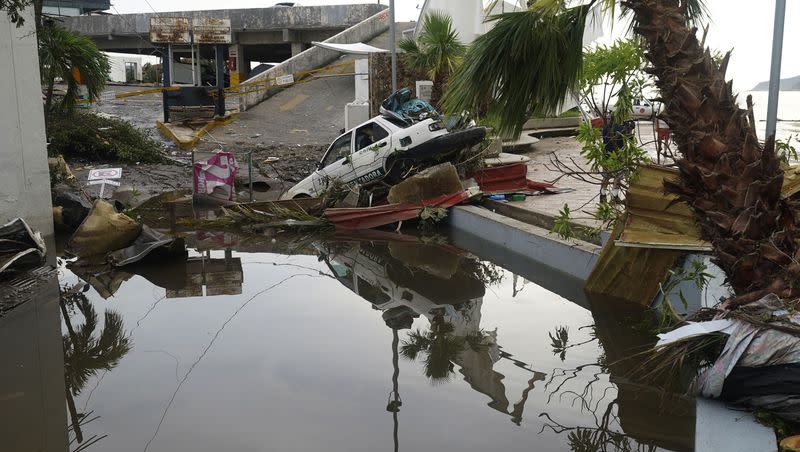Hurricane Otis’ rapid intensification leads to death toll and destruction

- Oops!Something went wrong.Please try again later.
On Thursday, officials announced that at least 27 people were killed by Hurricane Otis hitting Acapulco, Mexico, early Wednesday and at least four people remain missing.
“We regret the 27 dead,” said President Andrés Manuel López Obrador of Mexico, per NPR. “That’s what hurts the most.”
“The people sheltered, protected themselves and that’s why fortunately there weren’t more tragedies, loss of human life,” he said.
Widespread devastation such as flooding and damage from the wind left the area in shambles.
Related
How much damage did Hurricane Otis do?
Acapulco was cut off from the capital of Mexico City as the streets were flooded and caked with mud from the powerful winds and waves from the storm, reported The Associated Press.
More than 1 million residents — about 500,000 homes — were without power as all the telephone and electrical poles in the area were destroyed, per AP.
Residents were also cut off from running water as there were no functioning electrical pumps to move it, reported NPR.
Thousands engaged in looting of food, hygiene products and even refrigerators, as the town was cut off, reported AP.
Obrador said in a Thursday morning news briefing that the damage was so extensive that it was difficult to get aid to residents, per NPR. Officials and rescue workers couldn’t clear the land route to the capital until late Wednesday to get much-needed help.
In one video shared by NBC News, Jaime Villaneuva, who was staying at a hotel in the area, showed the hotel's destruction, with blown-out windows and torn-up flooring.
“I don’t know how we are alive, but we are alive,” Villanueva said in the video.
Related
How strong was Hurricane Otis?
It was forecasted to be a tropical storm — not strong enough to be labeled a hurricane, per AP. On Wednesday, a Category 5 storm hit the coast with 165 mph winds as the “strongest landfall of any East Pacific hurricane.”
How quickly did Hurricane Otis intensify?
In a matter of 12 hours, Hurricane Otis went from what AP called “mild to monster.”
“It’s one thing to have a Category 5 hurricane make landfall somewhere when you’re expecting it or expecting a strong hurricane, but to have it happen when you’re not expecting anything to happen is truly a nightmare,” Brian McNoldy, a hurricane researcher at the University of Miami, told AP.
While rapid intensification is becoming more and more common, as seen with Hurricane Idalia and other hurricanes this season, this intensification was different and not anticipated.
Jim Cantore, who is a certified broadcast meteorologist, posted on X, formerly known as Twitter, that he “knew it could impact Mexico,” but in his 37-plus years he’s never seen a rapid intensification like this one.
“Never saw it coming,” he wrote in the post.
How did Hurricane Otis intensify so fast?
Karthik Balaguru, who is a climate and data scientist at the Pacific Northwest National Laboratory, told The Washington Post that warm waters created an ideal environment for the storm to intensify quickly.
Balaguru commented that the El Niño weather pattern this year makes for warmer surface waters close to the equator, but that wasn’t the only contribution.
“It wasn’t just warm at the surface,” said Balaguru. “You had high ocean heat content. Those are definitely favorable conditions for rapid intensification.”
Related

